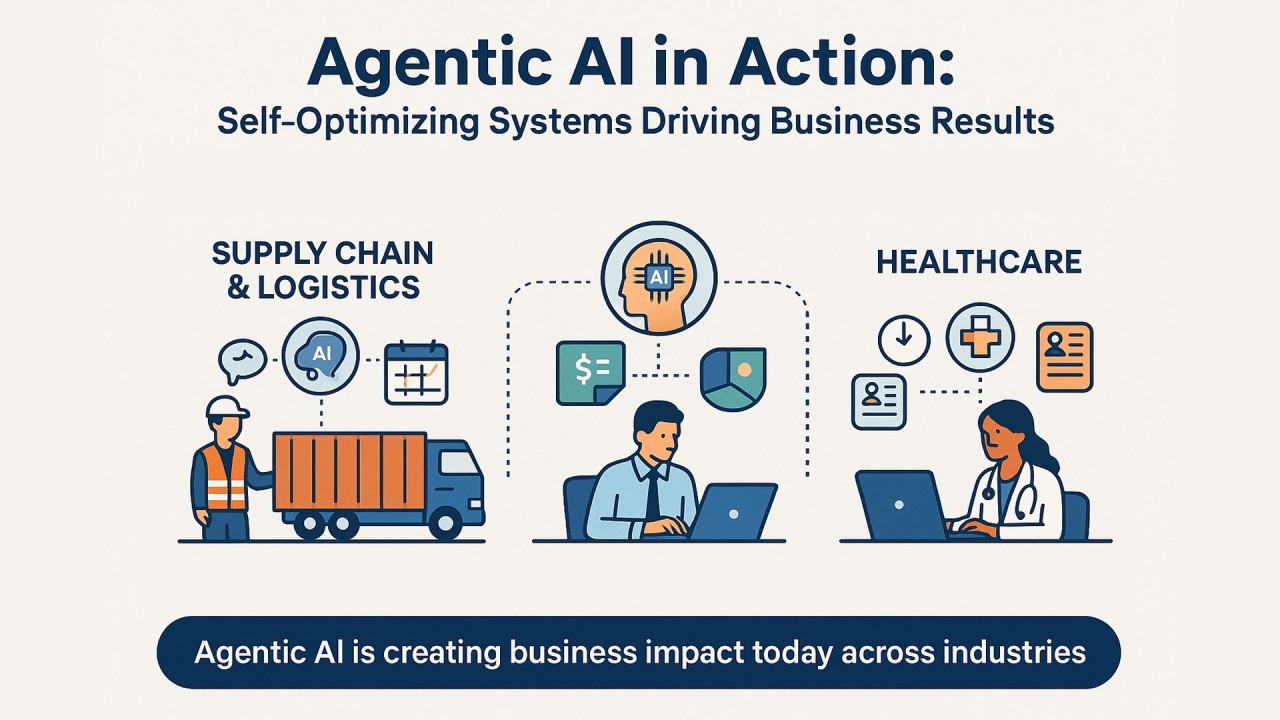
A year ago, most people thought of autonomous AI workflows as something coming “soon.” But they’re already here, and they’re working.
Across supply chain, finance, and healthcare, AI agents are showing they can make decisions on their own. They don’t just suggest next steps; they take action. And the companies using them are starting to see results.
Supply Chains Are Learning to Fix Themselves
Supply chain leaders have moved past dashboards and static alerts. Nearly half are using AI in production to reduce delays and cut costs (Gartner, 2025). These aren’t just smarter alerts; they’re full systems that reroute shipments, reschedule orders, and adjust inventory based on real-time signals.
Walmart’s AI system, Eden, adapts store inventory based on demand, weather, and local trends. It helps reduce overstock and out-of-stock issues (Forbes, 2025). Siemens uses autonomous sourcing agents to manage over 300 vendors, reducing supplier-related delays by 17% (Forbes, 2025). And FedEx uses AI agents to reroute trucks based on traffic and weather data, cutting delivery costs by 5–15% (McKinsey & Company, 2025).
These results aren’t edge cases. A recent study showed that AI-driven planning saved companies around $960K for every $12M spent on logistics, with ROI topping 280% (Accenture, 2025).
Finance Is Closing the Books Without Waiting
Only 6% of finance leaders use agentic AI today, but 38% plan to start in the next year (PwC CFO Pulse Survey, March 2025). That’s a huge shift.
These agents don’t just automate tasks; they run entire close processes, create journal entries, reconcile records, and surface anomalies. One system even links reconciliations to AI-generated entries that only need human signoff (Deloitte, 2025).
The result: faster closes, fewer errors, and more time for real analysis. Teams using these tools complete reports 40% faster and cut manual data entry in half (KPMG AI Finance Report, 2025).
Companies are also seeing real gains in forecasting. CFOs expect 24% better accuracy by 2027 thanks to AI-supported projections (EY Financial Planning Outlook, 2025). One large enterprise saved 200 hours annually by using AI to automate consolidations and reporting (KPMG AI Finance Report, 2025).
In Healthcare, AI Agents Are Taking On the Admin Load
More than half of healthcare organizations use AI agents for scheduling, medical records, and diagnosis support (HIMSS AI in Healthcare Survey, 2025). The pressure to reduce burnout and improve throughput is forcing the shift.
Hospitals use AI agents to find the best appointment times based on provider schedules, patient needs, and prep requirements. These tools are cutting wait times and no-shows.
On the backend, AI agents handle insurance forms, pre-authorizations, billing codes, and record updates, saving staff hours and reducing mistakes. One report found a 40% drop in time spent on admin tasks and a 35% boost in patient outcomes where AI agents were deployed (HIMSS AI in Healthcare Survey, 2025).
Some are going further. NYU Langone Health built an agentic model trained on 10 years of clinical notes. It predicts risks like mortality or 30-day readmission and sends alerts to doctors in real time (JAMA Network, 2025).
A Shift That’s Already Paying Off
In supply chains, agents reroute and reschedule. In finance, they reconcile and explain. In healthcare, they reduce burnout and help doctors catch issues faster.
All of this is already in place.
Yes, adoption is still early. But the results are starting to add up. Cost savings. Shorter cycles. Fewer errors. More time for people to do what they’re best at.
If this is what agentic AI looks like in year one, it’s worth asking: what happens when these systems mature?